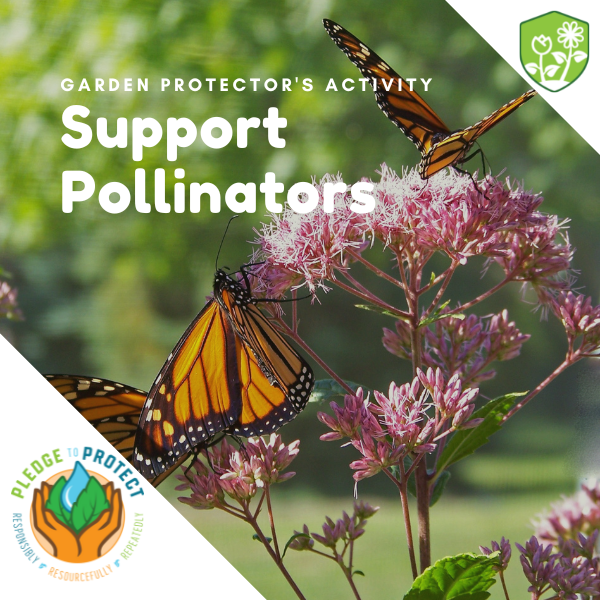What's The Issue?
Specialized relationships exist between plants, animals, pollinators, and other insects. For example, native birds like the chickadee, rely on caterpillars to rear their young while native plants support the life cycle of caterpillars. Monarch butterflies need native milkweed to complete their lifecycle, without milkweed, monarch larvae die.
Invasive species threaten native plants and wildlife by altering the natural habitats on which native species depend. Of particular concern for pollinators are invasive black and pale swallow-worts. These vining plants smother out native vegetation and take over habitats in which native milkweed and other pollinator-loving plants grow. Being in the milkweed family, monarchs can mistakenly lay their eggs on swallow-wort. Monarch larvae that hatch on swallow-wort plants will not survive. Given that monarch butterflies have recently been named an endangered species, the impacts caused by swallow-wort are even more threatening to their survival.
What Can Be Done?
- Grow native plant species in your garden. Choosing to grow native plants supports pollinators because native plants have co-evolved with pollinators and other native wildlife over time.
- Learn to recognize and manage invasive species found in your garden or on your property.
View a list of native plant species and discover native plants ranked by the number of butterfly and moth species that use them as host plants for their caterpillars using two resources from the Garden Protector’s Toolbox featured below.
Garden Protector's Tools
View this list of flowers, grasses, shrubs, trees, and vines native to New York State. developed by the NYS DEC.
Discover native plants, ranked by the number of butterfly and moth species that use them as host plants for their caterpillars.
Invasive Species To Watch For
Black and pale swallow-wort are two invasive plants that threaten one of the most adorned pollinators, the monarch butterfly which has recently been named an endangered species by the International Union for the Conservation of Nature and featured in an article by the National Geographic.
Identifying Pale and Black Swallow-wort

Swallow-wort Management Options
Other Invasives To Watch Out For In Your Garden
Get more resources to help you protect your garden from invasive species in the Garden Protector’s Toolbox.
Did you enjoy this blog post? Take our Pledge to Protect and get monthly emails showcasing actions you can take to protect your favorite hiking trails, paddleways, forests, garden, and community from the impacts of invasive species!
Take the Pledge to Protect
The Pledge-to-Protect is a fun, positive, inviting, engaging and rewarding way to participate in invasive species prevention and management.
|
|






